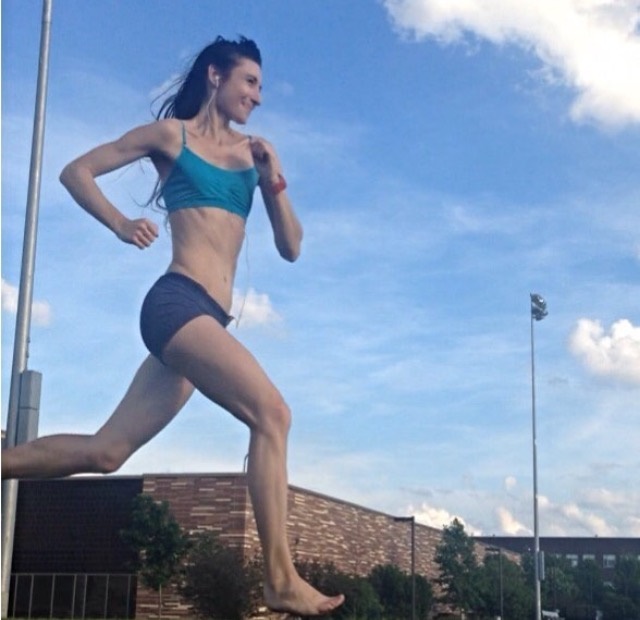The most important thing you should keep in mind about armswing when running is that you should always focus on driving your arms backward and not pumping them too far ahead of you as this will slow your momentum.
If you look at most East African runners, they tend to drive their arms backward –as if they are elbowing someone behind them. You will also notice that these runners have a higher back-kick as compared with most non-African runners. Perhaps a more rearward swinging armswing facilitates a more rearward swinging leg also.

Why You Should Have a Rearward Driving Armswing
When it comes to good running performance, it all comes down to how well you can sustain forward momentum, at an effortless rate. Normally, I strongly advise runners to focus on lower leg, especially foot strike mechanics, during running, because injury-prevention begins with a forefoot strike. But, if you are tired all the time while you run, you may need to turn your attention to your armswing.
The surprising cause of fatigue while you run could be that you have an armswing that swings out too far ahead in front of your body. This resists forward momentum and causes you to work harder because your body wants to travel forward, but your arms are creating mechanical lag and you become overworked.
Bruce and Sokunthe (2013) suggests that the rearward motion of the swinging of the arm during running regulates speed and that it is best to have a more backward pumping armswing when running as it helps the opposite leg propel the body forward, thus helping you gain better control of forward momentum. The researchers also revealed that a more rearward armswing helps support the body, giving you better balance.
So, the take home message here is that its hard to drag yourself when fatigue sets in when you run with an armswing that is too forward. To add more pep to your stride, just think of driving your arms more backward than forward.
More From Run Forefoot:
Why It’s Important to Always Run Faster
References:
Wilk BR and Sokunthea N. The Effects of Arm Swing on Running Mechanics. Running & FitNew, 2013; 13(1): 4.
Bretta Riches
BSc Neurobiology; MSc Biomechanics candidate, ultra minimalist runner & founder of RunForefoot. I was a heel striker, always injured. I was inspired by the great Tirunesh Dibaba to try forefoot running. Now, I'm injury free. This is why I launched Run Forefoot, to advocate the health & performance benefits of forefoot running and to raise awareness on the dangers of heel striking, because the world needs to know.
Latest posts by Bretta Riches (see all)
- Does Foot Strike Really Matter in Running? YES! - 17/04/2024
- Heel Lifts Increase Injury in Runners - 16/04/2024
- Are Minimalist Shoes Good for Seniors? YES! - 14/04/2024
